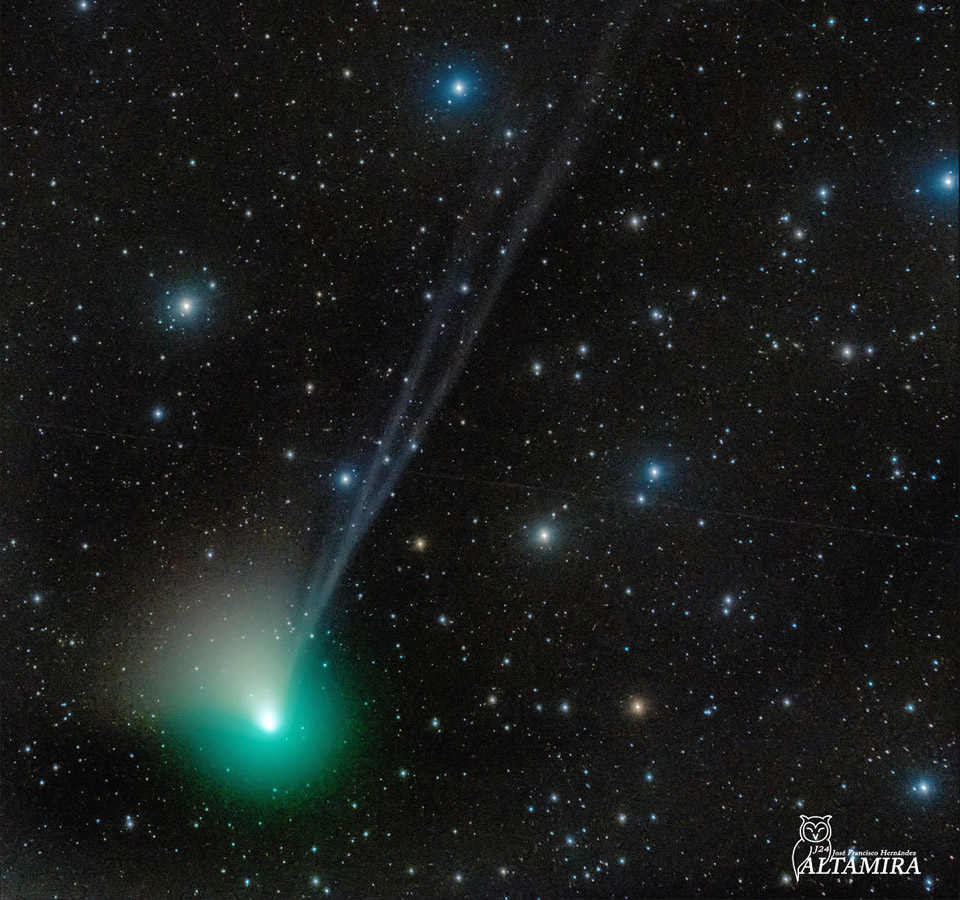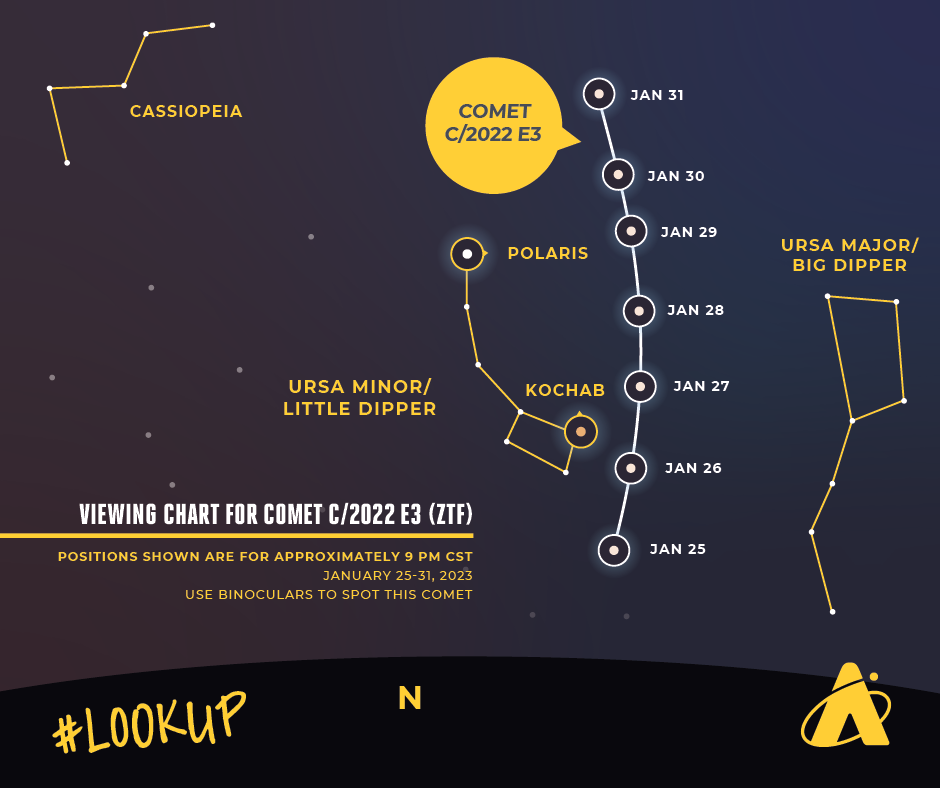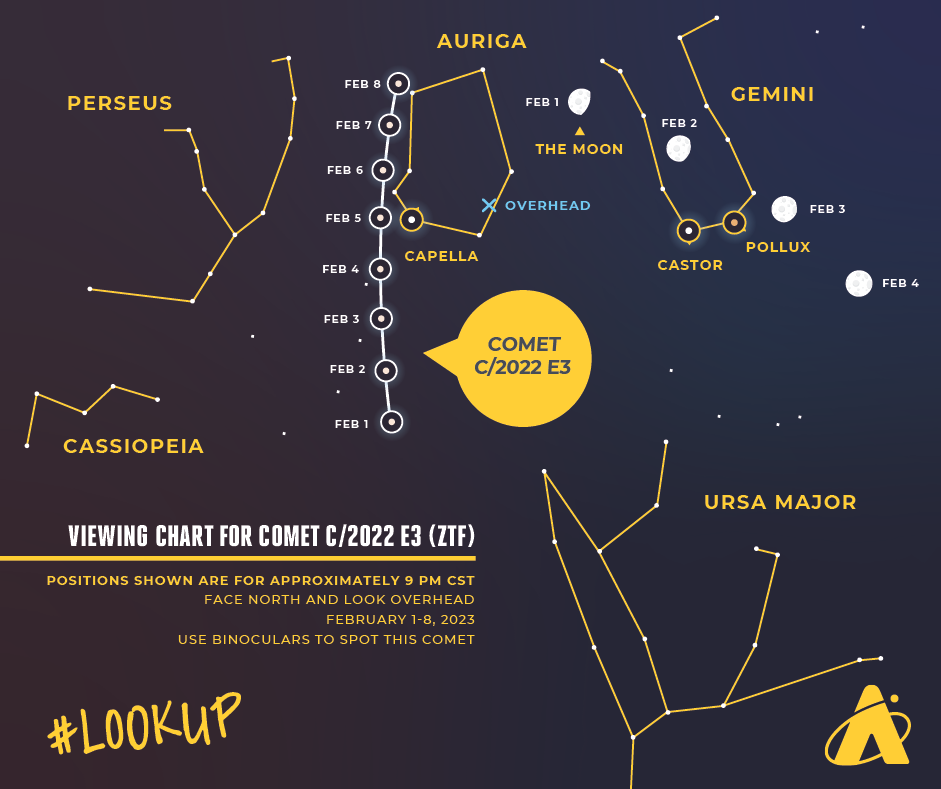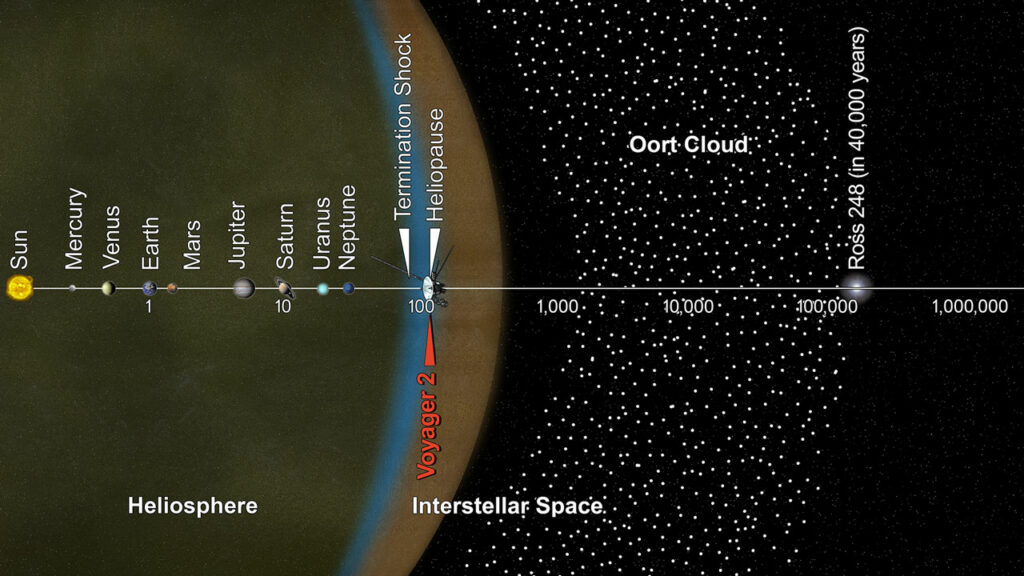Everything You Need To Know About The “Green Comet” AKA Comet C/2022 E3 (ZTF)

Header Image: Comet C/2022 E3 (ZTF) showing its green glow and three blue ion tails. Image Credit: Jose Francisco Hernández
Editor’s Note: Updated to include information about hyperbolic orbits.
Comet C/2022 E3 (ZTF), informally called the “Green Comet”, recently made its closest approach to the Sun, after having traveled tens of thousands of years from the far fringes of the solar system. It’s forecast to be brightest around January 31, 2023 and February 1, 2023 at just slightly brighter than 6th magnitude when the comet is at its closest point to Earth. But don’t worry. As you are gazing at this cosmic fuzzball, there’s no threat of it crashing into Earth, as it will be 26 million miles away from us at its closest approach.

Around 6th magnitude is the faintest an object can be seen without optical aid in a very clear, very dark sky. A comet that dim won’t look like popular photos of comets. It will be more like a faint, fuzzy glow or smear of light. Under a city or suburban sky, you’ll need binoculars or a small telescope to actually see this comet. Even far from city lights, you’ll likely need binoculars, too, because when the comet is brightest, the bright Moon will be in the sky at the same time.

What’s So Special About This Comet?
This comet is considered a long-period comet, which means its orbit extends very far out into our solar system from a place that we have not actually ever observed. The Oort Cloud has only been theoretically predicted due to the existence of comets like Comet C/2022 E3 (ZTF). For context, the Oort Cloud is 2000x further from the Sun than the Earth is to the Sun and Voyager 1 won’t reach the Oort Cloud’s edge for another 300 years. That’s pretty far away!

The last time the Green Comet was visible from Earth would have been 50,000 years ago during the last ice age. Since it came so close to the Sun during perihelion on January 6, 2023, it is predicted that this comet will not visit the inner solar system again for at least a million years. Or it potentially will leave our solar system entirely. Read more about its hyperbolic orbit here.
This comet is nicknamed the “Green Comet” because of the outgassing of diatomic carbon that occurs when any comet gets close enough to the Sun to be heated and then release its trapped gas.
How Was This Comet Named?
Each part of a comet’s name has a purpose! It helps us identify what kind of comet it is, when it was discovered, and where it was discovered.
Comet C/2022 E3 (ZTF)’s name can be broken down like this:
- C/ means that this comet is classified as a non-periodic comet
- 2022 identifies the year this comet was discovered
- E3 tells us the time period of the year that this comet was discovered with an alphabetic letter and a number to signify how many other comets were discovered in this time period
- A = the first half of January, B = the second half of January, and so on and so forth, except the letter I and Z are never used
- ZTF is short for Zwicky Transient Facility where the comet was discovered
Tips and Tricks For Seeing This Comet
- Check the weather beforehand
- Double check that you live or are observing from a latitude that is not too far south to see the comet in the early evening
- When the comet will potentially be at its brightest, there will be a waxing gibbous Moon in the sky at the same time that will make naked-eye viewing more difficult if not impossible
- Bring along binoculars or a small telescope for viewing
@adlerplanet Get out of the way Moon, a comet is on its way 😍 #spacetok #astronomytok #spacecomedy #comet #fyp #adlerplanetarium #chicagomuseum
Learn From Our Astronomy Educators
Watch exclusive live episodes of Sky Observers Hangout this January! If the weather permits and visibility is good, we’ll be broadcasting on YouTube a live view of Comet C/2022 E3 (ZTF) from our Doane Observatory in Chicago on February 1, 2023, or February 8, 2023! Subscribe for notifications about upcoming livestreams and new content.






